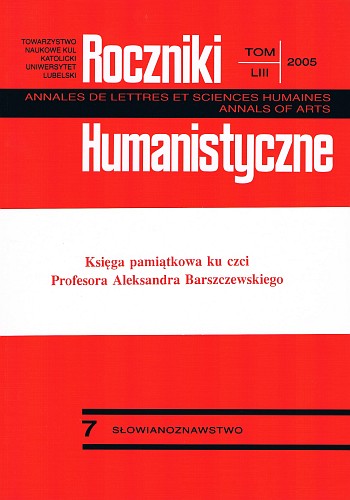
We kindly inform you that, as long as the subject affiliation of our 300.000+ articles is in progress, you might get unsufficient or no results on your third level or second level search. In this case, please broaden your search criteria.


In this article, the artistic features of two camp stories by Lukash Kalyuga “Дзе косцi мелюць” and “Зэнка малы нiколi не быў” are analyzed. The author examines the identification of the national character, culture, life of the Belarusian people. The work presents their psychology in the early twentieth century, their defining mental features, both positive and negative.
More...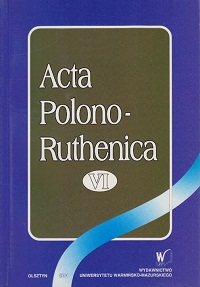
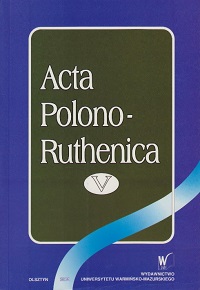
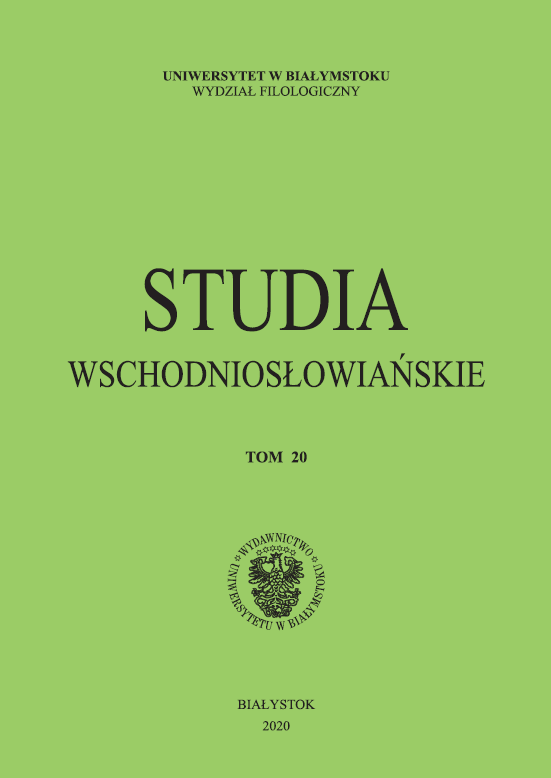
In this paper, dance is considered as an element of the artistic structure of dramatic works of Russian, Belarusian and Polish authors of the 1990s–2010s. It was revealed that this element represents the level of the chronotope: it becomes one of its expressive modes (creating an atmosphere due to emotional «charge»), manifests itself as a «non-everyday form of behavior» of a character (J. Faryno), as a «spatial motive» (O. Bagdasaryan) as a sense-forming centre of the artistic universe. A comparative analysis of the plays written by Russian, Belarusian and Polish playwrights of the indicated period showed that in Russian drama the transition occured from the dance – a «spatial motive» to the dance – a semantic center representing author’s model of the world and a Nietzschean man in the terms of a spontaneous, unstable world order. That was caused by the strengthening of the performative and receptive potential of modern drama. At the same time, in the Belarusian drama, due to more strong genetic ties with folklore, the dance for a long time has been manifesting itself as a game form of non-everyday behavior, however, since the mid-1990s it is often introduced as a «spatial motive» representing the extremely deformed consciousness of characters. If it comes to Polish drama, despite the actualization of the dance in the significant for its development works, in the latest plays it rarely functions as a semantic center, because of political and social themes predomination. The authors of this paper made an attempt to clarify the reasons for differents of the dance in the Russian, Belarusian, Polish drama of the 1990s–2010s, based on sociocultural factors, as well as on the logic of the development of the literary proces.
More...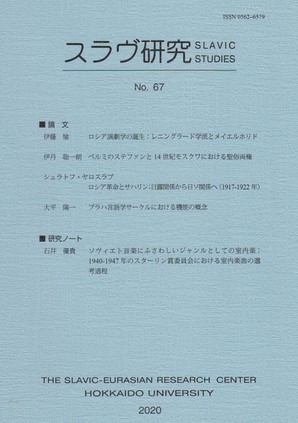
The problem of divergence and conflicts between literary norms is considered a particularly significant problem that arose during the formation of the modern Belarusian literary language. Practically, there are two types of literary Belarusian used in today’s Belarusian society. One is the official literary norm formed during the Soviet era (after 1933, to be precise) and used for many years in administration, education, and publication inside Belarus. The other is the literary norm Taraškievica, which was supported by some Belarusians, including intellectuals, from the Perestroika period. Taraškievica is a literary norm of modern Belarusian that was originally popularized in the 1920s and is named for the linguist Branislaŭ Taraškievič, the author of “Belarusian Grammar for Schools” (Vilnius, 1918), which was the foundation for the norm. These two literary norms are currently at odds in Belarusian society over which is the “authentic” Belarusian literary language. This article explores how divergence and conflicts between two Belarusian literary norms have emerged and how the two linguistic norms are regarded as “authentic” by their supporters. First, I overview the history of modern literary Belarusian from the perspective of corpus planning in language policy. Second, I analyze linguistic ideologies among the proponents of official norms and Taraškievica by focusing on the meta-linguistic discourse of the supporters of two standard language norms. Although Belarusian was exclusively used as a spoken language by peasants or poor szlachtas at the end of the eighteenth century, it began to be used for literary works starting in the nineteenth century. At the same time, linguistic research on the Belarusian language (to be precise, Belarusian dialects of Russian) was also promoted in the Russian Empire. In 1905 the tsarist government for the first time officially permitted publishing activity in Belarusian. After the collapse of the tsarist regime, with “Belarusian Grammar for Schools” published by B. Taraškievič in 1918, the orthographic and grammatical norms presented in this book were widely endorsed by the Belarusian intellectuals of that time and quickly brought into everyday linguistic practice. After the establishment of the Byelorussian Soviet Socialist Republic (BSSR) in 1919, it was the Soviet government, rather than individuals such as writers, linguists, and social activists, that guided the formation of the Belarusian literary language. Within the BSSR, the Institute of Belarusian Culture (later the Belarusian Academy of Sciences) played a leading role in the compilation of scientific terminology and Belarusian dictionaries, development of orthography, and other projects. When the Stalinist regime began in the 1930s, however, the linguists of the Academy of Sciences, who had led the standardization of Belarusian, were successively purged. In 1933, the BSSR’s Council of People’s Commissars implemented the orthographic reform that rendered the Belarusian orthographic norms, and some grammatical norms, closer to the Russian literary language. While the official orthography based on this reform was adopted in Soviet Belarus in 1934, the reform was accepted neither by the Belarusians in Western Belarus (then under the rule of Poland) nor by Belarusian communities abroad.
More...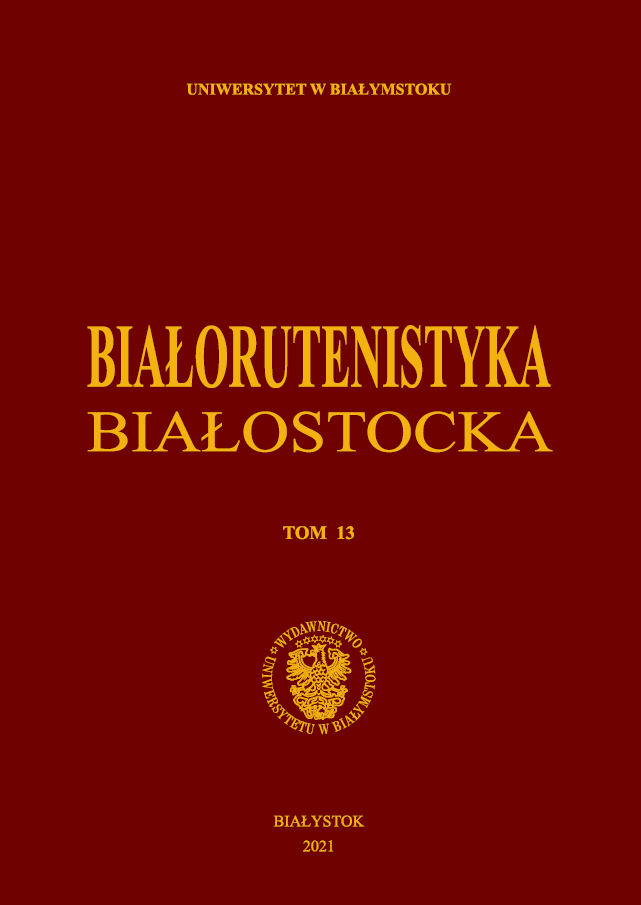
The article deals with text associations on the example of the story “Mushtuk I Papka” by Y. Bryl. The study of the mechanism of associative links contributes to an in-depth understanding of ideological and thematic content of the story, its artistic imagery, the writer’s thesaurus, the peculiarities of the author’s style and worldview. The associative and semantic field of the story “Mushtuk I Papka” by Y. Bryl includes vocabulary, intertext, the author’s reminiscences, lyrical tone, plot-compositional structure of the text, and the author’s conceptual sphere. The fundamental role of associativity is to provide comprehensive perception and understanding of the story.
More...
The article examines the artistic axiosphere of “Chronicle of Palesie” by I. Melezh. The artistic axiosphere is a totality of artistic qualities of the work which are recognized as valuable and significant by both the writer and the readers. They include the subject and the perspective of the image, subject matter, life persuasiveness, humanistic orientation, polemic attitude to traditional aesthetic conventions and artistic experiment. The artistic axiosphere of “Chronicle of Palesie” is dynamic and subjective, which ensures the work dialogue with time and with various generations of professional and amateur readers.
More...
The article uses narrative techniques to explore the role of a fact in literary works. A. Adamovich’s autobiographical novel “Vixi” that serves as illustrative material has been analyzed. The purpose of the article is to examine a literary work at several textual levels: “event – naration – discourse”, “events in the novel – historical context (internal and external chronotope)”, the relationship of “author – narator – reader”. It is argued that the fact in the process of a narrative story cannot remain unchanged – a subjective interpretation of the writer expressed by narrator’s words changes it explicitly. It is emphasized that the fact can be used as a trigger for deploying the main action or changing the style of writing. For A. Adamovich self-reflection as the way of understanding reality is a means to create the world model which represents clear polarization.
More...
The author shows how emotive means when falling into the sphere of Christian iconology, are transformed into tools for the spiritual change of a person. One such tool is represented by emotive keys. In the prayers of St Kirill Turovsky they are represented by such varieties as “liturgical emotive keys” – fragments of liturgical sequences (direct quotations, individual reminiscences and/or allusions, centons from reminiscences, allusions, paraphrases, etc.) and “emotive toposes” – images specific to the Pax Christiana culture, easily recognizable by its adherents (hyperbolized self-abasement, different types of metaphors).
More...
This article is devoted to the study of the ideological and aesthetic foundations of Adam Ploug’s poetry in organic correlation with the artistic experience of other representatives of the Belarusian-Polish literary borderland (A. Mitskevich, J.I. Krashevsky, etc.). It is worth noting that the formation of A. Ploug’s creative consciousness took place under the direct influence of a number of ideas of Western European Romanticism, including the sacralization of the homeland and its past (historical memory), the idealization of freedom, Christian humanism and non-conformism, the idea of the timelessness of art. At the same time, both the concept of the lyrical hero and the artistic space in A. Ploug’s works are all built on the basis of the traditions of the Belarusian folk culture, which makes it possible to assert that the poet belongs primarily to Belarusian Romanticism.
More...
The article describes peculiar features of aesthetics and poetics of “sadistic verses” in the creative work of modern Austrian poet E. Yandle, Russian author A. Grygoriev and Belarusian masters of artistic word V. Zhybul and V. Burlak. Using the means of grotesque, carnivalization, illogic and black humour the authors show their protest against an excessive normativity and nihilistic pathos to modern reality with its standards, and create a peculiar lyrical hero – a weirdo, an eccentric person who falls into the chain of catastrophes, crashes and accidents.
More...
The article discusses life and work of Vyacheslav Bogdanovich (1878–1939/1940?), an outstanding figure of Belarusian national movement, a senator of the Polish-Lithuanian Commonwealth. The son of a Belarusian Orthodox priest, he became one of the most recognized intellectual leaders of his nation, a talented writer, a skilled polemicist and a politician. V. Bogdanovich is the author of many different works. Special attention is paid to his articles devoted to the poetry of Yanka Kupala and Yakub Kolas as well as hagiographic studies related to the mission of the Orthodox patrons of Belarus – Anthony, John and Eustafij. The problem of autocephaly of the Orthodox Church in Poland, which became disastrous for V. Bogdanovich, affected all aspects of his multilateral activities. It also had a direct impact on his description of such topics as “Belarusian spiritual heritage”, “languages of the Orthodox Church”, “the people and the intelligentsia”, “the church and the state”. The last days of V. Bogdanovich’s life were tragic. He was released from Polish detention in September 1939, less than a month later he was arrested in Vilnus by the NKVD and went missing.
More...

The article is dedicated to the memory of Corresponding Member of the National Academy of Sciences of Belarus, Professor, Doctor of Science in Philology Aleh Antonavich Lojka. Most of the life of the famous scientist and writer was associated with the Belarusian State University. A.A. Lojka entered the university in 1948 and until the end of his life considered himself a “university student”. The book “My BSU”, written in 2005–2006, remained unpublished. It includes memoirs “From my recollections of a university student”, “Memories from the socalled social life”, notes “In search of teaching skills” and “Philological poem”. The article for the first time provides information about the history and composition of this book, using archival material.
More...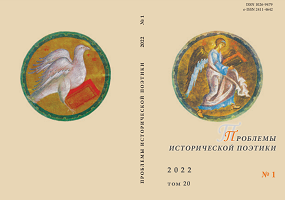
This article focuses on the silence of a fairy tale hero, i. e. a deliberate withholding from speaking that is a metonymic manifestation of a symbolic death. The aim of the study was to determine the meanings of silence that are representative of this type of narration and to indicate their probable mythical and ritual connotations. Research materials included mainly Polish and Eastern Slavic tales of a sister whose silence constitutes a precondition for bringing her brothers, previously turned into birds, back into human form. The analysis showed the use of a semantic component essential to silence required to keep a secret and impossibility of revealing the truth. If a spell can be a result of a parental curse, then suspending communication becomes a form of maintaining bonds with the brothers killed by words. It can also be interpreted as a reflection of the speech behaviour of the parents, who violate the basic folk ethics of the word. The analysed narratives preserved the magical functions of silence as the assurance of the effectiveness of objects made in complete silence (in the given example — shirts made for the spellbound brothers). Nevertheless, in other variants of plot type 451, the silence of the heroine is the most significant precondition for her own existential transformation, with numerous narratives describing the multi-stage nature of the rite of passage (a marriageable girl → a married woman → a newly delivered mother → a mother). In this indirect way the fairy tale reveals the limits of female communicative behaviour in folk culture. In order to present the essence of the liminality of the given story’s heroine, the “stasis” category was used, which helped to correlate her (and any other fairy tale protagonist) basic existential experience with a temporal dimension of human existence construed as regular consecutive time passages and pauses, moments of inactivity (stasis).
More...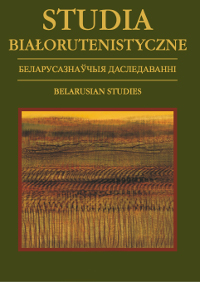
The article focuses on the performance of the Belarusian Free Theatre based on the novel The Dogs of Europe by Аlhierd Bacharevich, which premiered in Minsk on 7.03.2019, and the next stage version was presented during the tour of the collective in London in March 2022. The production, arranged in the conditions of a politically motivated relocation of the troupe in Kiev, is considered in the article in the context of the latest stage practices with high performative-receptive potential, bringing them closer to the techniques of mass media, political protest actions. This determined the methodological basis of the research, which turned to the aesthetic aspects of the theory of communication, the phenomenon of ,,theatricalization” (the focus on visual action presentation) of all spheres of life, as well as to the immanent properties of drama, revealed taking into account the performative turn in modern drama and theatre, which have become adequate artistic statements about the complex relationships within the dyad ,,man – society”. In the course of the study, it was found that the reception of the novel by Аlhierd Bacharevich was carried out on the stage of the Belarusian Free Theatre in line with the ideological and aesthetic attitudes of the collective, which since its foundation in 2005 has been approving the concept of the ,,barricade theatre”, typologically close to a number of theatrical and dramaturgical projects dedicated to the ,,pain points” of modernity: the demarcation of the world continuum according to political and ideological principles, the threat of a global military conflict and their latest local refractions: the suppression of peaceful protests in Belarus in 2020, the invasion of Russian troops on the territory of Ukraine in 2022.
More...
The article presents a comparative historical analysis of fairy tales of the Friends in Life and Death (ATU/SUS 470) plot type, their features and distribution among Belarusians, Russians and Estonians. In the Estonian and Belarusian material, stories of this type are in some cases contaminated with the ATU 470A and 471A types. We examine differences in the flow of time in the real world and other worlds, and consider the features of the chronotope of fairy tales and the organization of artistic space within them, as well as ways of transition and communication between the worlds. According to the most common plot of ATU/SUS 470 fairy tales, two friends promise to be guests at each other’s weddings. One of them dies and the living friend invites the dead one to his wedding; however, after receiving a counter-invitation, he finds himself in another world. There he either travels with the deceased friend through his world, where he sees various curiosities and paradoxes, or celebrates at the wedding of the deceased friend. It seems to the living person that he spent several hours with the deceased friend (or with his brother or father in some Estonian versions), but when he returns to his own world, he discovers that decades or centuries have passed on Earth. Most often, after this discovery, the hero dies and turns to dust, but there are some rare Estonian versions where he miraculously restores ¬himself and his bride to their original state (and age), after which they get married again.
More...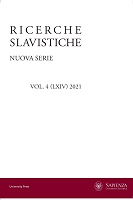
A young rabbinical pupil from a remote Belarusian shtetl, Shmuel Plaŭnik, debuted as a Hebrew poet, and then moved on to Russian poetry, until, with the adoption of the pseudonym Zmitrok Bjadulja around 1910, he came to Belarusian prose and poetry and integration into the Belarusian intelligentsia. His unconventional choice of a Belarusian cultural and literary identity was in contradiction to the traditional ways of acculturation of Jews in the Russian Empire, based on entry into the majority Russian language and culture. Bjadulja not only chose what was at the time a colonial culture with no supporting statehood, but also maintained his dual identity as a Belarusian Jew, which is the basis of his autobiographical narratives, sketches and short stories. In his narrative prose, Bjadulja proposed an innovative synthesis of Slavic and Jewish elements based on his profound knowledge of Jewish sources and Belarusian folklore. This fusion profoundly shaped the imagery, motifs, style and language of his works. Bjadulja was able to bring together two stateless, marginalised and deprecated ethno-national cultures to create a utopian vision of Jewish-Belarusian coexistence and interference that, thanks to the power of his pen, became a fundamental part of the Belarusian canon in his own formation.
More...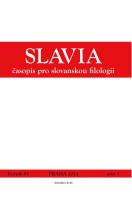
What type of drama, and with what possibilities of expression, emerges in cultures constrained by power? How and what do playwrights who are forced to write anonymously and cannot count on seeing their plays performed in their own country write? Using the example of several dramatic texts by Belarussian contemporary playwrights (first of all we deal with the texts I will emerge from the forest, straighten my backbone, and it shall become my sword by noname67 and Half a Year by Victoria Koval) and theatrical projects that emerged in response to the suppressed protests in Belarus, the study presents the themes, motifs, and modes of narration of the events that will become part of the national history and memory as its traumatic experience.
More...